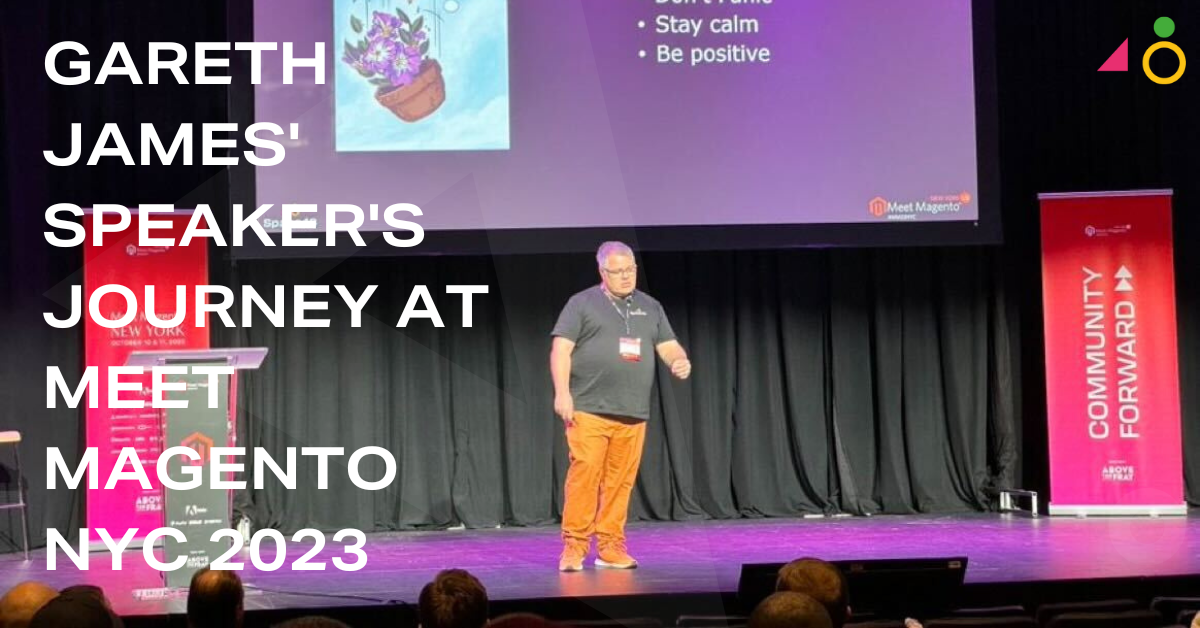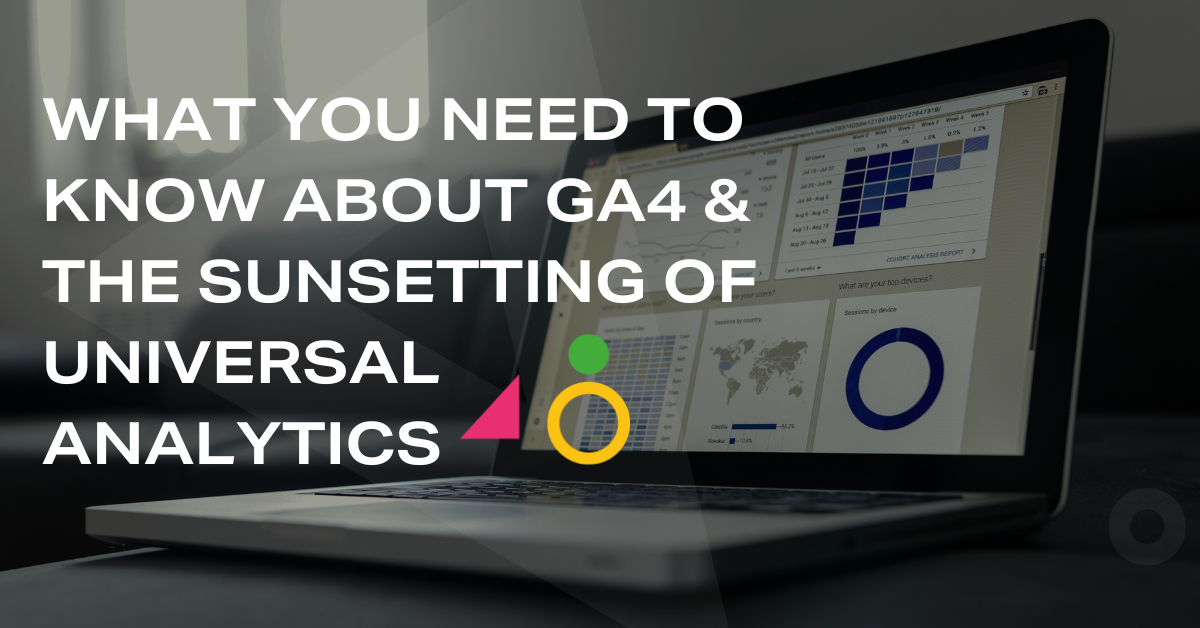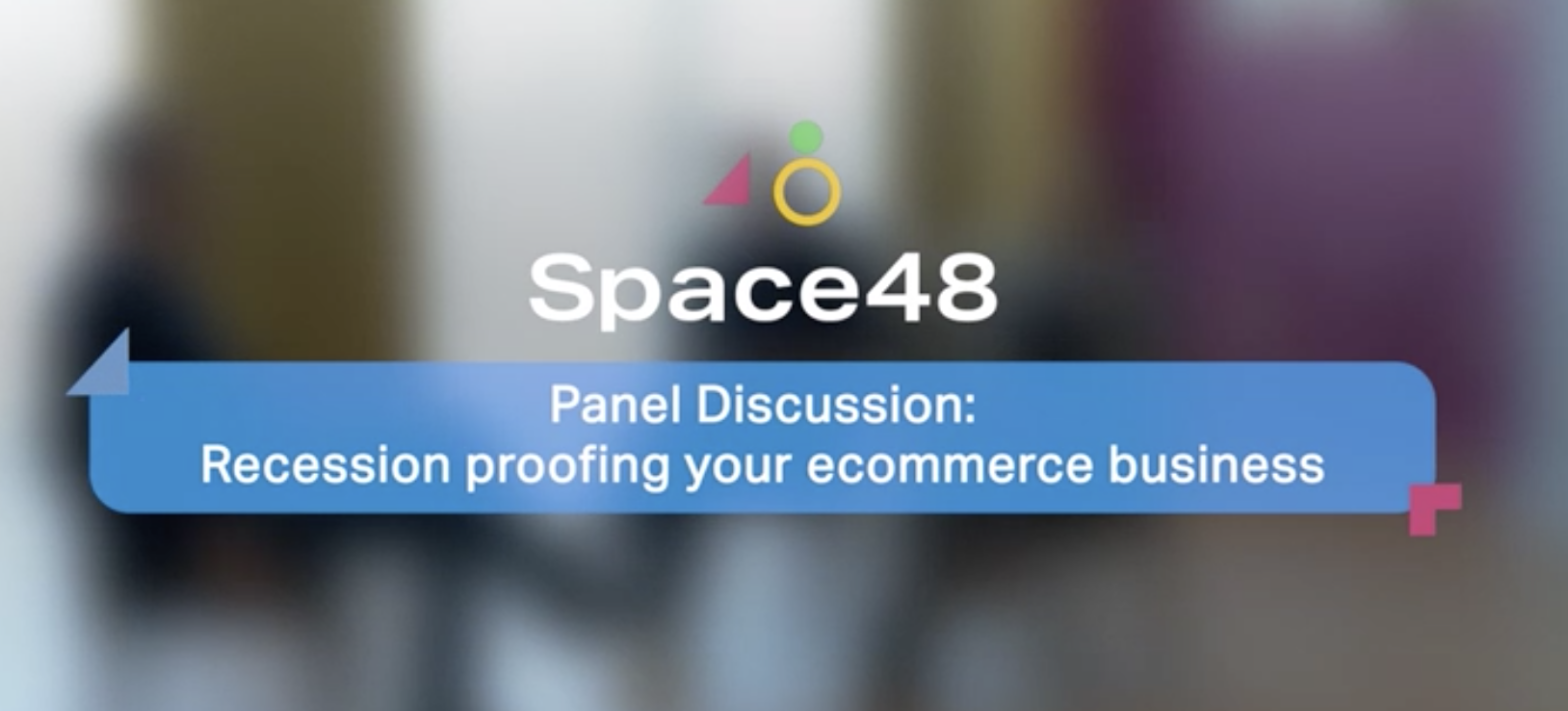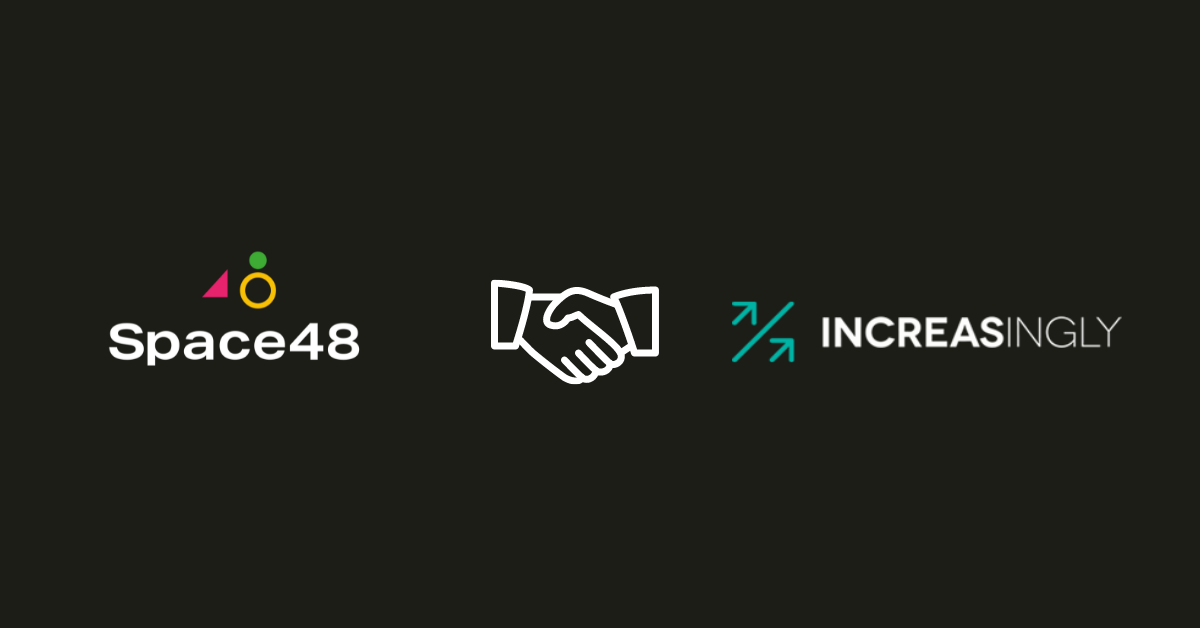
How to Boost Customer Retention with Marketing Automation
Customer retention should be a key focus for any retail brand, as retaining your customers is significantly more cost-effective than acquiring new ones. Boosting your customer lifecycle value (CLV) is a great way to ensure the long-term success in ecommerce. So where does marketing automation come in? Tom Robertshaw is here to explain!
In this blog, Space 48’s Ecommerce Evangelist, Tom Robertshaw, discusses some of the key customer retention strategies and the important role of marketing automation:
The fundamentals of customer retention in ecommerce
A lot of businesses spend too much time and resources on customer acquisition and think the job is done once a customer converts and buys a product. It’s far from job done at this point!
Returning customers make up 40% of online revenues despite representing only 8% of website visitors (Source: Adobe Digital Index Report)
This statistic tells its own story! Your customer lifecycle value is a clear indicator of the health of your retail business, so retaining your existing customers for longer is crucial.
But it’s not just about revenue, it’s about taking a customer-centric approach to your ecommerce activity. Take responsibility for looking after your customers and giving them reasons to stay loyal to your brand.
Here are some of the key areas of customer retention for your retail brand to consider:
- Conversion rate optimisation and improving your website UX
- User generated content and social proof
- Loyalty programmes and rewards
- Brand storytelling and engaging content marketing
- Customer service and post-purchase aftercare
- Efficient shipping and delightful unboxing experience
- Customer segmentation and tailored email marketing campaigns
- Personalisation and product recommendations
- Cart/browse abandonment campaigns
- Remarketing/retargeting
- Omnichannel commerce and in-store experience
Many of the customer retention tactics above rely on some form of automation or can be enhanced by using marketing automation.
How to use marketing automation to boost customer retention
What are the main reasons that customers return to your retail website, stay loyal and even recommend your brand to others – beyond just having great products?
Here are four key factors that feed customer retention:
- Great customer experience
- Engaging and relevant content
- Trust and transparency
- Feeling valued and rewarded
And here are the best ways to enhance these factors and boost customer retention with marketing automation:
- Post-purchase content to help and delight customers
- Customer segmentation and automated triggers
- Personalised product recommendations
- Profile and behaviour-based rewards
- Remarketing/targeted email campaigns
- Reengagement campaigns
- UX-related automation and smart content
Let’s see some of these tactics in action…
Ecommerce retention campaigns in action
Post-purchase emails
Go beyond basic order confirmation or thank you emails when setting up automated emails for new customers. Delight customers straight away with a welcome email series or a compelling incentive to browse and buy again via your ecommerce website.
A study by Return Path found that subscribers reading one welcome email go onto open at least 40% of emails from this brand (in the following 180 days).
This example from Levi’s below shows how an automated thank you email can encourage repeat purchases right from the get-go, as it uses a 20% off discount on the next order and free delivery!
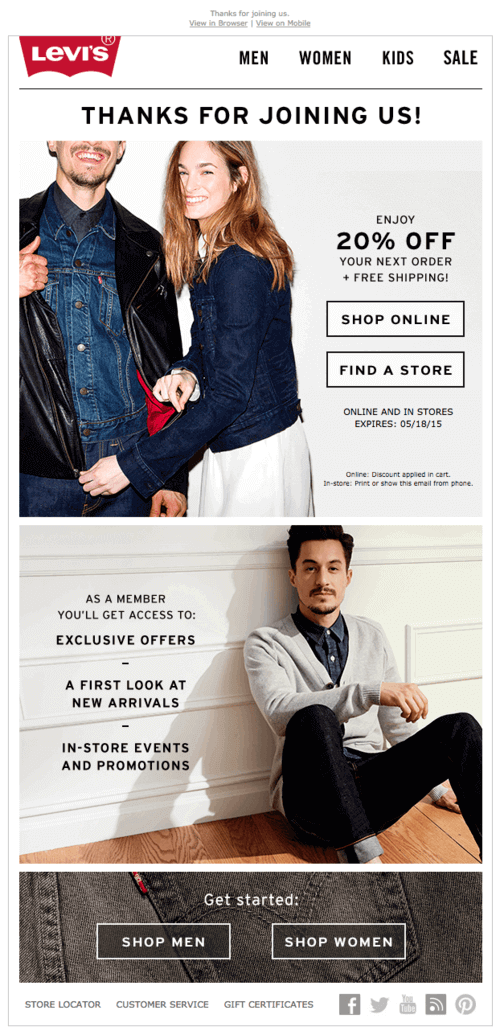
Consider sending a series of emails that relate to the product (very handy for gadget-based products), including instructions and tips for using the products, video tutorials, or even related products that may enhance or compliment the product the customer bought.
Amazon Echo and Sony are two brands delivering great welcome emails and delightful post-purchase messages. Be helpful, deliver great experiences and demonstrate good customer service from the start of the post-purchase journey. Here’s an email example from Sony below:
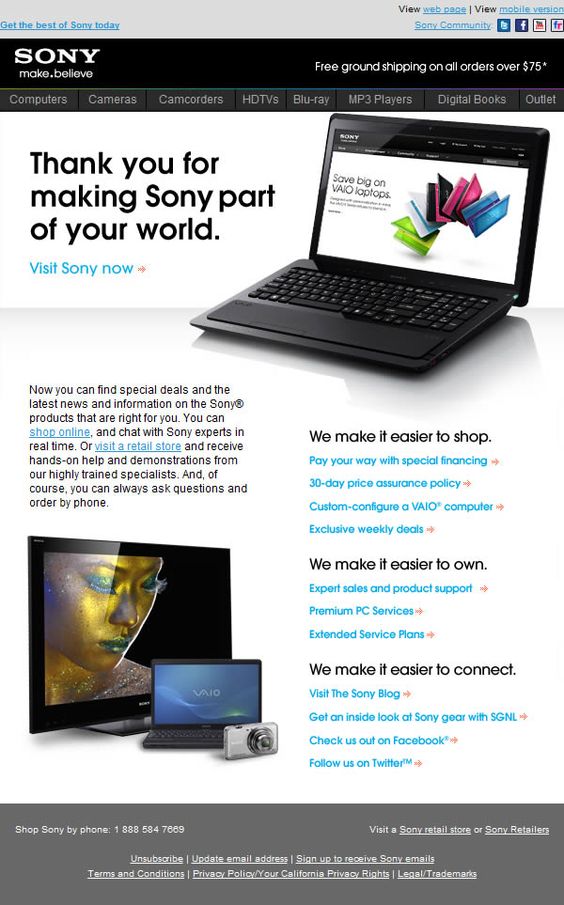
Product recommendations and personalisastion
There are lots of great personalisation tools for ecommerce, but we are partners with Nosto, because we think they’re awesome!
Nosto is a powerful omnichannel personalisation, utilising a vast array of customer insights to deliver visual-engaging and effective tailored shopping experiences across channels, adding relevant product recommendations to customers at key touchpoints.
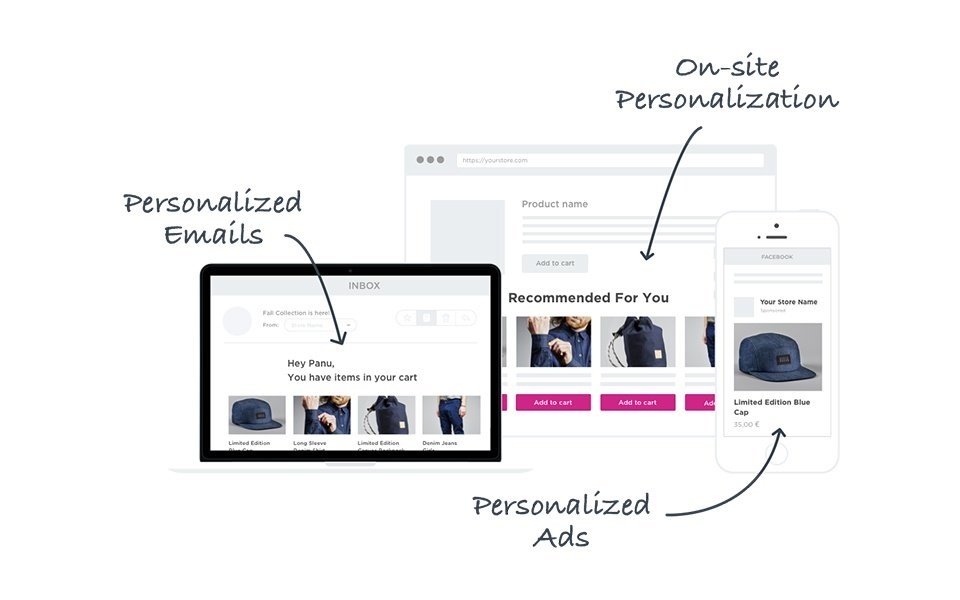 Here’s a great example of onsite product recommendations in action on Effortless Skin‘s retail website:
Here’s a great example of onsite product recommendations in action on Effortless Skin‘s retail website:
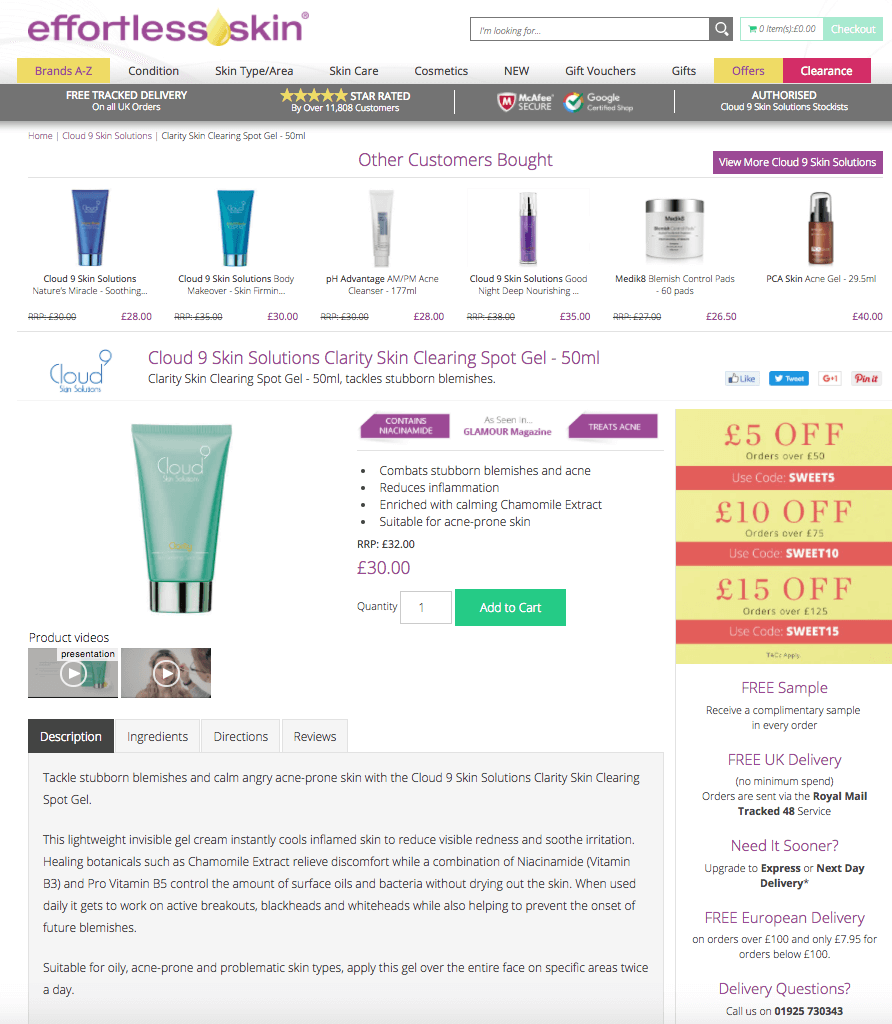
Email marketing is a great channel for delivering tailored product recommendations, by setting up automated triggers to keep customers engaged with relevant content. See this email example from Joy below, which delights subscribers with content based on current trends and popular products:
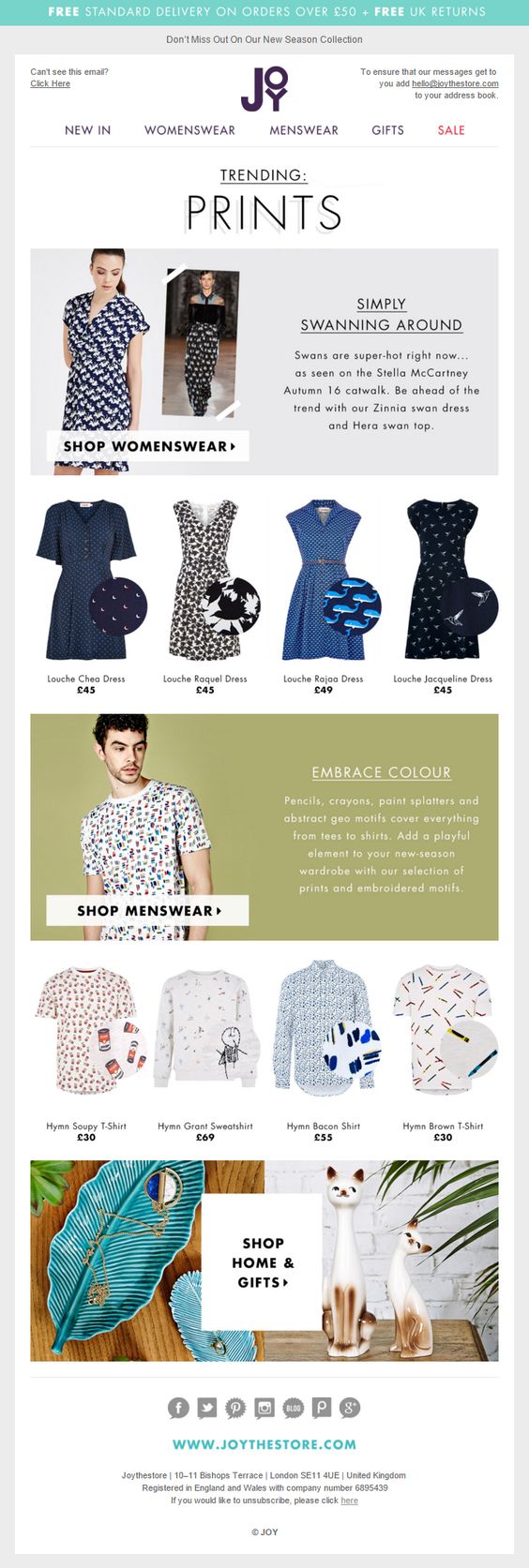
You can also create automated email campaigns driving personalised recommendations to customers, according to browsing behaviours, such as product page view history and category search.
Here’s an effective browse abandonment email campaign from PacSun, incorporating some urgency – leveraging FOMO (fear of missing out) – encouraging subscribers to return to the website before their size in the products sells out:
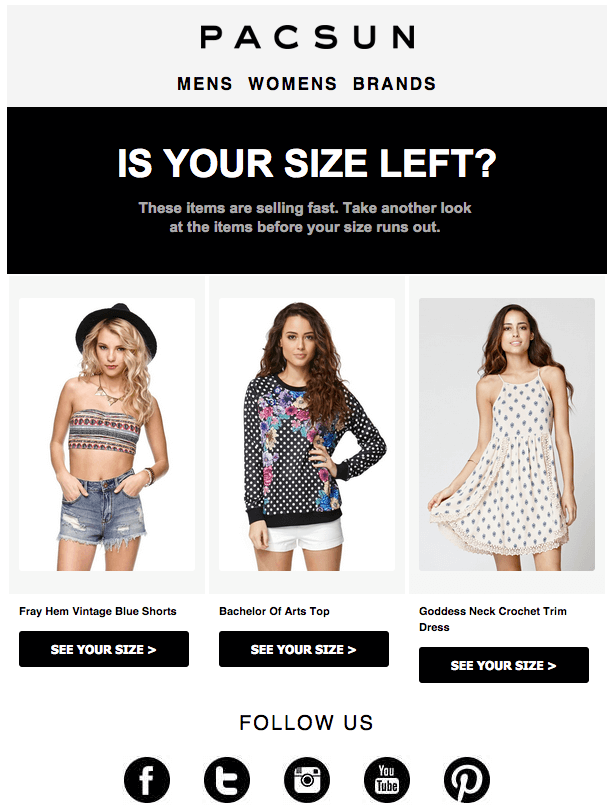
Cart abandonment emails
Cart abandonment emails are the bare minimum that retail brands should be doing with automated email campaigns and they’re hugely effective for boosting conversions and keeping existing customer engaged with your content and ecommerce website.
Here’s a good basket abandonment email campaign from Nordstrom, which not only encourages subscribers to return to the checkout, but includes some helpful messages around the brand’s returns policy and free shipping. More reasons to shop with them!
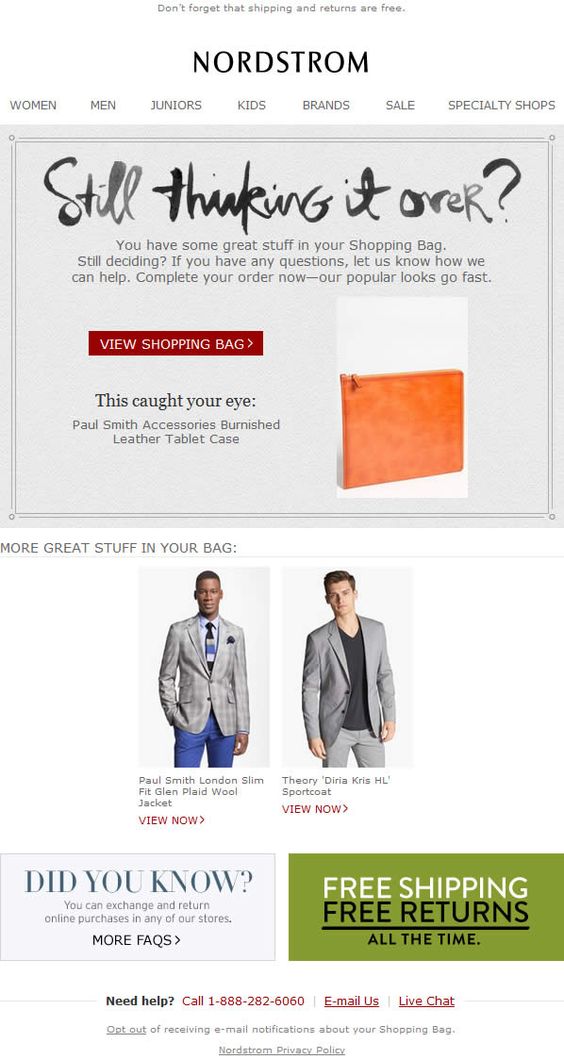
If you want to learn how to create an effective cart abandonment email series, check out free guide: How to Create Killer Cart Abandonment Campaigns.
Profile and behaviour-based rewards
There are lots of great opportunities for retailers to look after their customers, reward them and incentivise them. Set up automated triggers throughout the customer lifecycle, which send targeted messages and emails out to customers, according to their buying habits, profile details and level of engagement.
Create loyalty-based email campaigns, delivering relevant content, offers and discounts, to reward customers (using purchase thresholds and other related triggers). And don’t forget the birthday email! This is a no-brainer campaign to automate, offering customers personalisation and rewards to celebrate their birthday!
Here’s a birthday email from Office, containing a simple money-off discount code, relevant copy and pretty email design to engage subscribers:
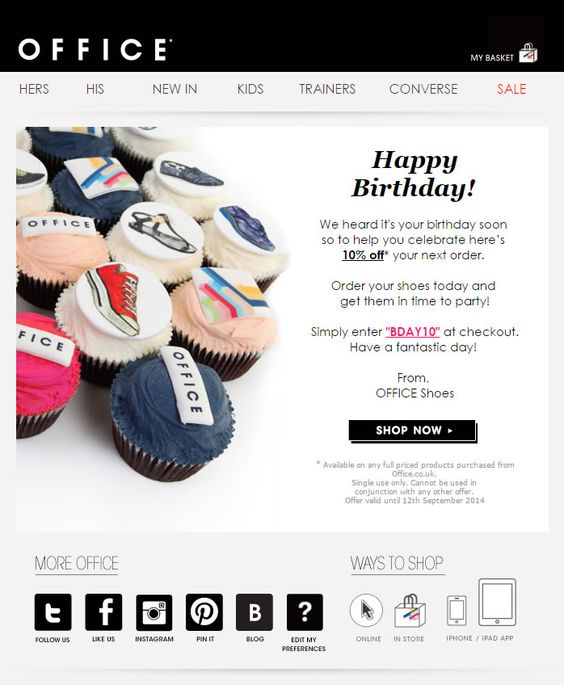
Re-engagement campaigns
Email marketing re-engagement (or reactivation) campaigns are an effective but underutilised opportunity for retailers. Don’t let your subscribers lapse and become inactive customers. Set up automated triggers to send out re-engagement email campaigns to the least active segments of your email database, specifically aimed at winning them back.
Determine your criteria for when a subscriber qualifies for re-engagement and plan a series of reactivation tactics to encourage them to interactive with your emails, leveraging various persuasion tactics, offers and compelling subject lines.
Check out this re-engagement email campaign example from Not On the High Street:
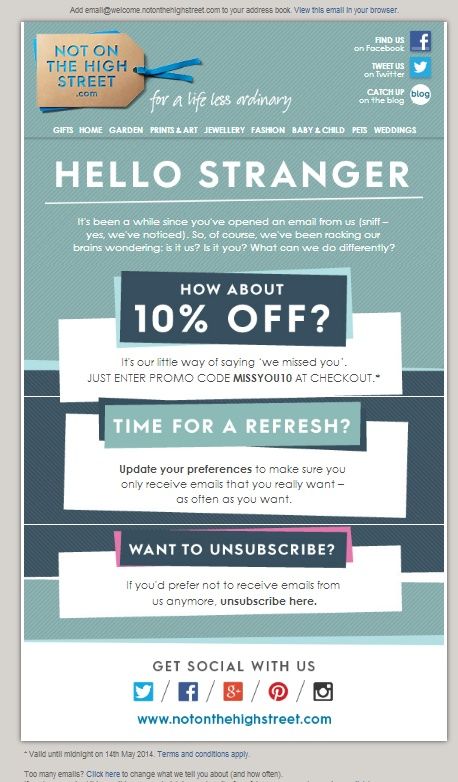
UX-related automation, pop-ups and smart content
Marketing automation and email marketing go hand in hand, nurturing subscribers throughout the customer lifecycle, but there are some powerful UX tactics to optimise conversions on your ecommerce website and increase customer retention. Here are a few great brand examples…
The first is from ASOS. Their handy size guide tool on their product pages really helps the decision-making process for customers and gives them a better browsing and buying experience, thanks to a lightbox that allows users to fill in height and weight measurements:
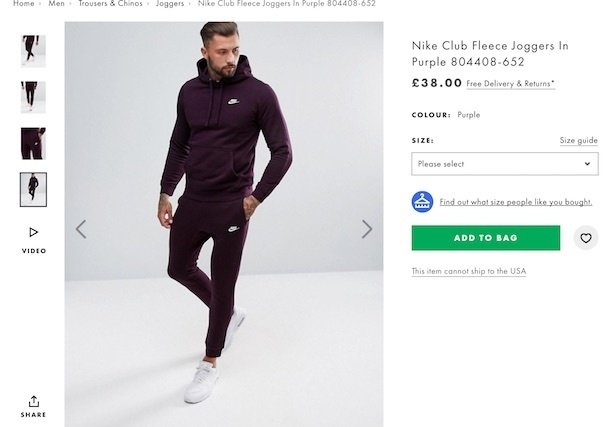
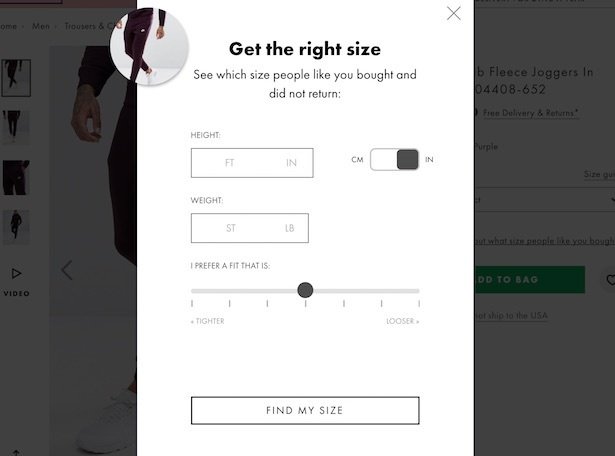
The next UX example is from AO, which uses automation to shows visitors the most popular product matches, along with the product price and image, as they type into the website’s search feature:
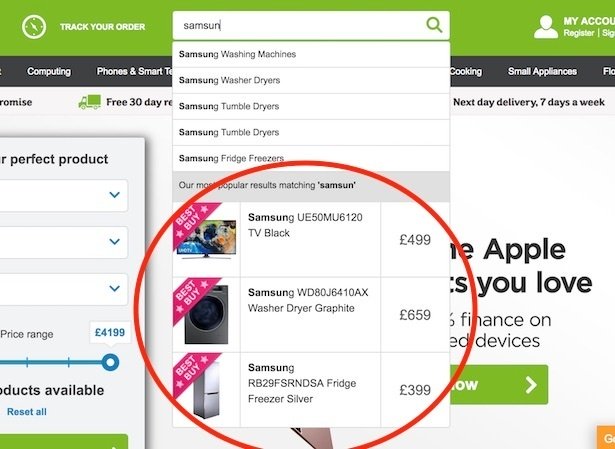
Finally, this example from Foyles is an automated pop overs, which helps to keep people on the website, by reminding customers about free delivery thresholds and the benefits of their loyalty schemes:
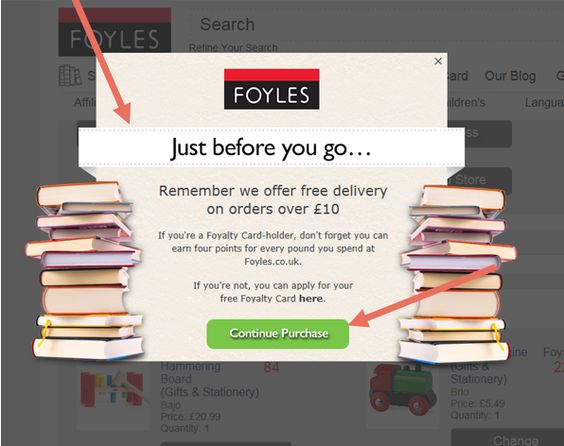
These are just a few examples of how to improve your ecommerce website’s user experience with marketing automation. You can also use smart content to show different offers, products and information, depending on where visitors are in their customer journeys.
Summary
Hopefully, this blog has demonstrated the important role that marketing automation has to play in customer retention strategies. Use automation to help, delight, engage and nurture customers to encourage them to keep shopping with your business long term. This will help you drive ongoing revenue from existing customers.
If you want learn more about customer retention strategies, I recently guested on Kissmetrics’ blog, Achieve High Growth by Keeping Customers Coming Back to Your eCommerce Website. Also, you can watch a rerun of my recent webinar with WorkCast, discussing How to Create a Rock-Solid Customer Retention Strategy. Get access to the webinar recording now!
{{cta(‘b6b2dbf7-54aa-4c5c-9d58-94d673bf5c43’)}}
Space 48 is a leading UK ecommerce consultancy and website development agency, specialising in Magento and Shopware platforms. Do you have any questions about customer retention? Get in touch with our ecommerce experts.

